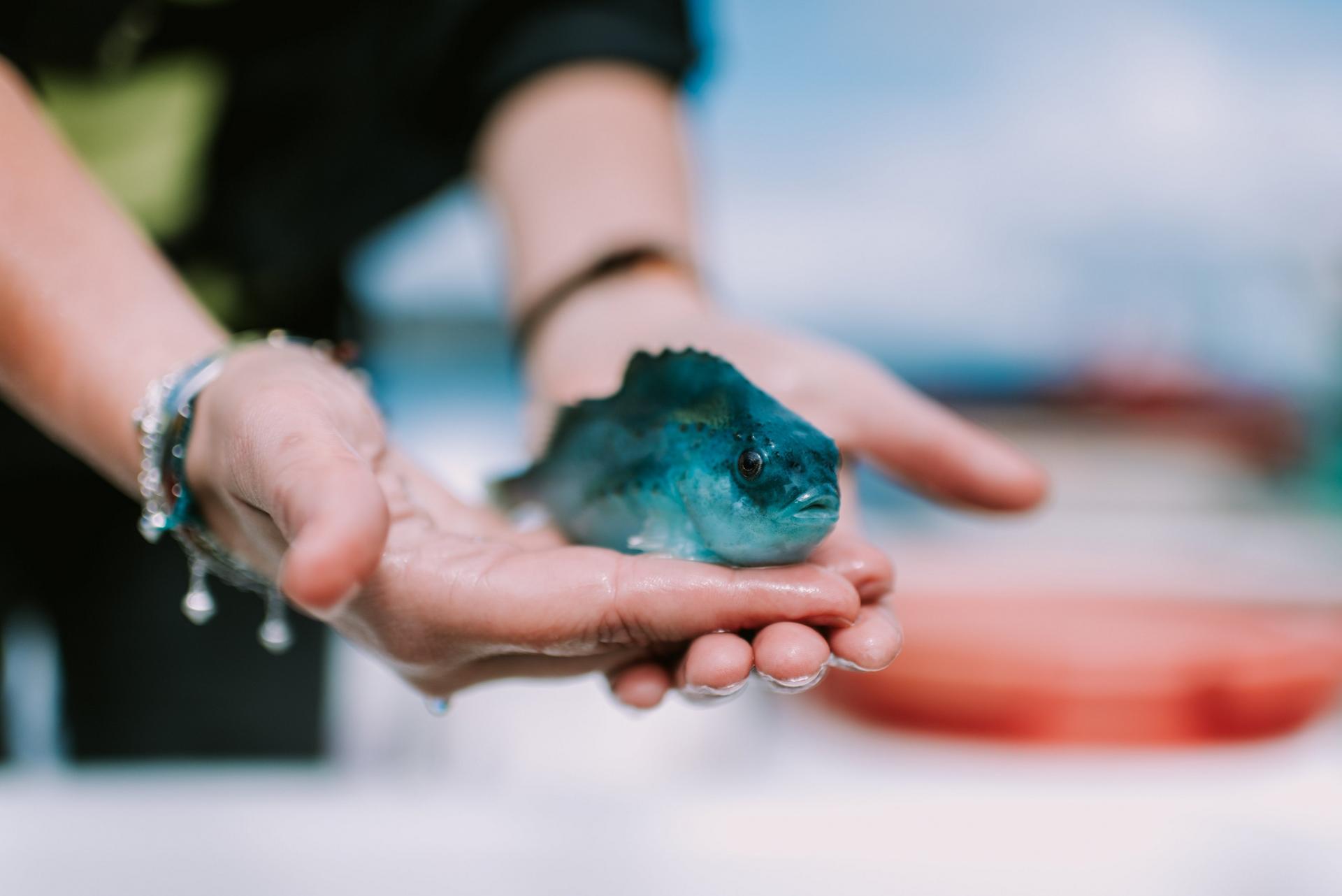Cleaner Fish Nutrition
Until a few years ago, it was not common that cleaner fish in cages were fed maintenance feeds. This practice has now changed however as research has identified that insufficient access to the correct nutrients makes for less healthy and less functional cleaner fish.

Nutrition is the most important step in maintaining healthy fish
Challenges
Cleaner fish represent one of several good ways to control salmon lice. The conditions for lumpfish have been challenging at times, many fish have been lost due to a lack of knowledge and too little focus on welfare. One of the challenges with wrasse is that they are very discerning. This means an unusually high requirement for tasty feed. The Symbio concept at BioMar has been founded on two pillars - nutritional requirements and palatability. The latter means amongst other things the inclusion of attractant krill meal in relation to different species' taste requirements.
The feed is decisive
Previously, many people believed that cleaner fish would be able to live on lice alone and had no need for its own feed. However, this resulted in poor nutritional status and the fish were easily exposed to emaciation and sickness. Today's species-specific cleaner fish feed is one of many measures that have increased the general welfare of caged cleaner fish. This has in its turn created a more effective cleaner fish with a better survival rate and better delousing capacity. Cleaner fish are covered by animal welfare legislation on the same level as salmon. This means amongst other things that cleaner fish must be fed.
Cleaner fish feed from BioMar ensures good nutrition and produces a stronger and more robust cleaner fish. Good nutritional status is crucial for the cleaner fish being able to perform and carry out its job feeding on lice. There is very reason to believe that prioritising the welfare of cleaner fish also provides better louse control.
Enjoyment in hiding
Intensive development work on the needs of cleaner fish regarding their surroundings has also produced results. In order for cleaner fish to thrive, it is important that the species-specific requirements for places to hide and rest are taken into consideration. In this connection, artificial kelp forest in which wrasse can hide is used. Similar systems are also used for lumpfish that rely on sticking to a surface to rest. Cleaner fish have thus achieved a basis that is very similar to what cleaner fish experience in their natural state where they live on the reef and similar places. Salmon consciously seek hide the hiding places of cleaner fish. The enjoyment of cleaner fish in hiding is very important, as this is precisely where much of the biological delousing takes place.
Nevertheless, challenges remain regarding the welfare of cleaner fish, and different species of cleaner fish present different challenges. Wrasse continue to be obtained by capturing them live and transporting them to the farms. This can be challenging with respect to biosafety, for example. Farmed cleaner fish have an advantage here as biosafety issues can be addressed at a different level than with wild-caught wrasse. It is also regarded as important in connection with sustainability that our dependence on wild-caught wrasse is reduced.
